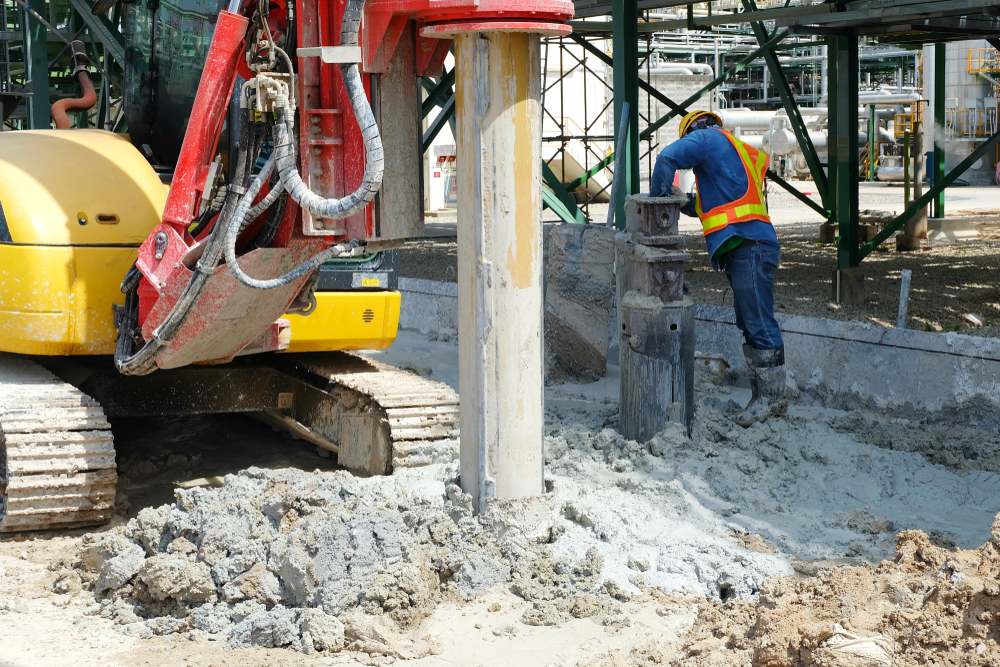All about Geotechnical Engineering For Construction Projects
Table of ContentsThe Greatest Guide To Geotechnical Engineering For Construction ProjectsFascination About Geotechnical Engineering For Construction ProjectsGeotechnical Engineering For Construction Projects - TruthsGetting My Geotechnical Engineering For Construction Projects To WorkSome Ideas on Geotechnical Engineering For Construction Projects You Should KnowOur Geotechnical Engineering For Construction Projects PDFsAbout Geotechnical Engineering For Construction Projects6 Easy Facts About Geotechnical Engineering For Construction Projects Explained
Accompanying this enhanced complexity comes geological and ecological variables that impact the design of the structure, which is perhaps the most vital part of any kind of development. People need to rely on that buildings, bridges, and highways will certainly stand the test of time. A Geotechnical designer recommends on just how a framework can best be sustained providing its unique circumstances What's hidden below the surface area of the ground is most likely the most vital item of info that a Geotechnical Designer seeks.These samples are then assessed by the lab to establish soil make-up (Geotechnical Engineering for Construction Projects). The malfunction of sand, silt, clay, and other products existing in the soil, aids the engineer establish what distinct characteristics the website has and what the implications of those may be. Obviously soil structure is just one test that can be carried out on examples
What Does Geotechnical Engineering For Construction Projects Mean?
Based on these examinations, there may be more dirt borings that are pierced, or the engineer might have sufficient details from the initial examinations to make a recommendation to the client on how finest to continue with their task. Results are normally reported through borings logs which reveal the soil make-up and attributes at a selection of depths.
Geotechnical engineers are accountable for recognizing the residential or commercial properties of natural sources and utilizing this understanding to establish secure, economical designs for construction projects. It is a necessary component of any kind of civil engineering job, as it is made use of to determine the suitability of a website for building and construction and to ensure the structure's security.
This consists of executing research laboratory examinations on the samples and using geophysical methods such as seismic refraction and electric resistivity surveys. This data is utilized to analyze the site's viability for building and to establish the sort of foundation that ought to be made use of. Geotechnical engineering assesses dirt problems, identifies possible threats, selects an ideal foundation system for the proposed framework, and determines the most effective foundation design for an offered job.
An Unbiased View of Geotechnical Engineering For Construction Projects
The framework may end up being unsteady or collapse without appropriate dirt stabilisation, resulting in expensive repair services and potential injury. The stabilization procedure involves making use of numerous strategies to boost the security of the dirt, such as compaction, grouting, and the enhancement of enhancing materials. Without soil stabilization, the dangers connected with construction projects would certainly be much greater, and the outcomes a lot less trustworthy.
It is a process used to improve the residential or commercial properties of dirts. Geotechnical designers conduct site examinations to evaluate the dirt's residential or commercial properties and recognize possible threats. They likewise develop structures and other structures that need to be improved the website, thinking about the soil's characteristics. They establish and execute dirt stabilization strategies, such as including concrete, lime, or various other maintaining representatives, to boost the soil's strength and stability.
Top Guidelines Of Geotechnical Engineering For Construction Projects
Geotechnical designers are important in assisting to guarantee that dirt stabilization is done correctly to make sure that the structure is safe and secure. Geotechnical design is additionally made use of to analyze dirt problems and determine helpful hints possible risks. This consists of evaluating possible flooding, landslides, and various other natural calamities that could impact the foundation.
Geotechnical designers utilize this expertise to do site examinations, dirt, and rock screening, and to interpret the results to determine the suitable design criteria for a job. This info is utilized to make certain that the foundation, retaining walls, inclines, and other structures improved or within the subsurface materials have adequate stability and resistance to exterior loads, such as earthquakes, wind, and water.
These structures need a deep understanding of the habits of the subsurface materials, in addition to the capacity to manage the effect of excavation and building and construction on the surrounding atmosphere. Geotechnical designers use their experience to establish the proper layout parameters for these frameworks, such as the shapes and size of the tunnel, the toughness of the supporting rock, and the kind and quantity of support called for.
Along with the style and building and construction of structures, geotechnical engineering additionally plays a vital function in the recovery and maintenance of existing frameworks. As frameworks age, they might experience degradation or various other problems that impact their stability and efficiency. Geotechnical engineers use their proficiency to assess the problem of these frameworks, determine the causes of the troubles, and establish approaches to resolve them.
The 45-Second Trick For Geotechnical Engineering For Construction Projects
In this article, I will discuss the role of geotechnical engineering and the sorts of issues geotechnical designers address. Geotechnical engineers (geotechs) are associated with virtually every sort of civil engineering visit this web-site job. Every structure is sustained by dirt or rock unless it is floating, flying, or dropping down.
Geotechs are generally most entailed at the start of a job. Geotechnical Engineering for Construction Projects. Several of the tasks that a geotech might be accountable for are explanation examining subsurface conditions, figuring out called for laboratory screening of soil and rock, translating the subsurface exploration outcomes, and composing records that record the site problems and supply recommendations for structures, fill specs, incline security, etc
It is not uncommon for geotechnical engineers to specialize in only one of the locations provided above and study that subject their whole profession. Geotechnical engineering is a crucial aspect of any civil engineering project. Despite how excellent a framework is constructed, it will certainly not be fantastic for long if the structure is poor.
Not known Details About Geotechnical Engineering For Construction Projects

Often, things that might not appear important end up being crucial years later when problems develop. One last thing to maintain in mind: geotechnical engineering is wed to geology. No matter exactly how fantastic your engineering competence is, if something vital is missed out on in the geologic characterization at a website, your experience may not conserve you.
He appreciates creeping about on any landslide he can find and investing time fly angling on the water. I hope you appreciated this week's post by guest writer Jese Vance. I hope you'll join us.
3 Simple Techniques For Geotechnical Engineering For Construction Projects

It is essential to design the foundation to endure natural and synthetic lots. Loads can be vertical or side. It is very important to understand the soil condition before designing the kind and depth of structure required for the framework. In order to know the subsurface soil problem, a geotechnical examination is needed.
4 Easy Facts About Geotechnical Engineering For Construction Projects Shown
When the examination results come, the Geotechnical Designer evaluations the report, which describes the dirt and rock homes groundwater problem and the linked risks. The kind of foundation needed to develop the framework is then figured out. Based on the suggestion of the Geotechnical Designer, the architectural engineer after that makes the framework.
Comments on “The Only Guide to Geotechnical Engineering For Construction Projects”